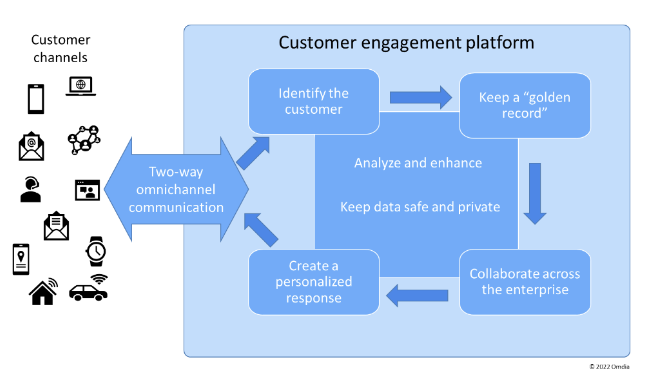Your customers hear from you. A lot, and in a lot of different ways. When they walk into a branch. When they visit your website or use your app. When they use an ATM. When they open their mail/email/messenger app. When they pick up the phone. Does it always feel like they’re talking to the same institution?
Omdia recently published a report on Customer Engagement. Included is a conceptual framework for thinking about your discrete communication functions. Central to creating a coherent experience for your customers is how you handle and use your data.

Disjointed communications between all the ways you interact with your customers is a recipe for lower satisfaction and higher costs. Beyond frustrating customers, siloed data prevents more effective advertising and cross-sell campaigns. You also miss predicting churn, especially painful where a small amount of effort could retain a valuable customer.
Before you enter the next planning or budget process, think about the opportunities and weaknesses in your operations and how you might be able to exploit or mitigate them using the data you already have or could have.
A few questions to spur your thinking:
- How does your customer’s experience with your website, app, call center, and in-branch differ?
- Which of these are better? In what ways?
- Is that important to your customer?
- What information about your customers is only available to which channels? How much friction (and cost) does this create?
Identifying these gaps and having a step-wise approach to closing them can enable you to run ahead of the crowd. With usable marketing attribution, you can drive even higher returns on investments in time and budget. Allocating resources based on lifetime value customer segments can elevate your organization to best-in-class bottom line performance.
If you’re looking for more ideas on where to start, let us know, and we can help you get going.

